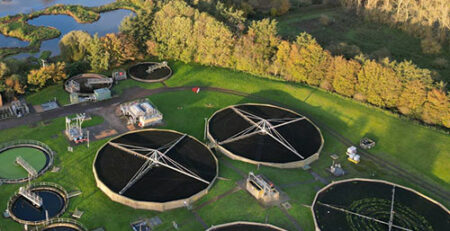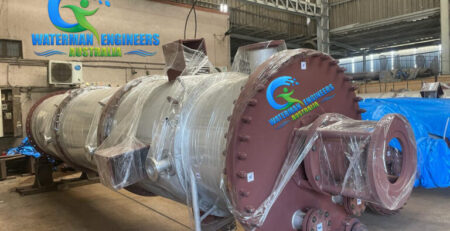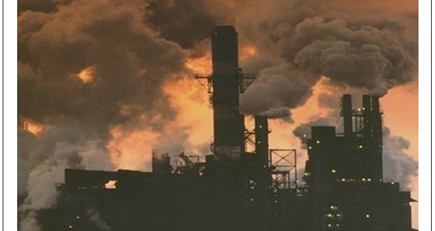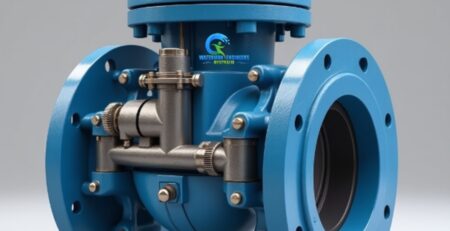Desalination Plants in Ecuador Market
In the last few years, the global desalination plants market has been experiencing significant growth. This is mainly due to the increase in demand for water in the developing economies. Desalination is a technology that allows the removal of salt from seawater or brackish water by using distillation.
What is Multi-effect Distillation Method?
Multi-effect distillation is one of the most efficient thermal desalination techniques. It is used to purify seawater and other saline water. The process is based on the concept of waste heat.
In this method, seawater is evaporated in a series of stages, resulting in a brine that is collected in the next cell. At the end of the process, the remaining left water is flushed back into the sea.
One advantage of MED is its low dissolved solids content. It is also an energy-efficient process. Because the vapour raised during evaporation is at a lower temperature than the steam that is heated, the overall energy consumption of a MED plant can be reduced.
A MED unit has low installation cost and is ideal for land-based and off-shore installations. The units can be powered by boilers or steam turbines. They can produce up to 10,000 m3/day.
Currently, the global demand for water is expected to increase by 20 percent to 30 percent by 2050. This is due to a growing global population. Additionally, rapid industrialization is causing the demand for water to rise. Moreover, governments are investing in water treatment solutions. Therefore, it is predicted that the market for water desalination equipment will grow.
Various technological advances in the industry aim at improving freshwater yield, reducing the cost of disposal and improving the safety of the process. However, it is important to note that the amount of saline water that is produced is very dependent on the input.
As of today, there are about 2000 desalination plants worldwide. Of these, the largest share is held by the LAMEA region. Although the demand for water is forecast to increase, there are still a few global players controlling the dominant share.
What is Brackish Water Desalination Technology Market Growth in Ecuador?
Desalination technologies have been an effective means of supplying reliable, clean water. In recent years, the industry has made significant advances in technology, reducing the cost of desalination.
The growing population of coastal areas has increased demand for water. With a limited supply of fresh water, industries were faced with a challenge to minimize their impact on municipal water supplies. To address this issue, governments are investing in water treatment technologies.
As a result, the demand for desalination systems has increased significantly in Ecuador. Among the leading players Waterman Engineers Australia is offering brackish water desalination technologies in order to address the demand.
The desalination water Ecuador market is projected to grow at a rapid pace over the next few years. It is expected to reach a significant milestone by 2027. During this period, China will be the leading market for water desalination equipment.
Besides North America, Europe and Asia Pacific are also important markets for the industry. Europe is composed of countries like Belgium, Netherlands, and Switzerland. Among other countries, Spain, Italy, and Germany are included in this region.
The Middle East and Africa region is another key market for water desalination equipment. A fast urbanization rate and a large population in need of desalination systems has boosted the demand for these products.
While the United States and Canada are major contributors to the global demand for water, many other nations are finding it difficult to provide clean, fresh water to their citizens. This has paved the way for more communities to investigate brackish water desalination as a way to avoid water scarcity.
Los Merinos Wastewater Treatment Plant in Guayaquil
Los Merinos is a wastewater treatment plant in Guayaquil, Ecuador. The project is part of an integrated sanitation system in the city. This new facility will help to solve several odour problems in the area.
The plant will be built in the northern part of the city. Approximately 1.5 million people will benefit from the facility. There are currently over 3 million residents in Guayaquil.
The wastewater treatment plant will be used for the treatment of sewage, gases, and sludge. It will have a capacity of four meters per second. In addition, the plant will incorporate cogeneration facilities.
Los Merinos is one of the largest water treatment projects in Latin America. It will be the only facility in the country with high-tech features.
The Los Merinos WWTP was designed with a strict environmental protection plan. It uses advanced biological purification systems.
As a result, the discharge effluent of the Los Merinos WWTP will comply with water quality standards. According to the Municipal Water and Sewage Company of Guayaquil, the city’s sanitary sewer system covers ninety percent of the service area.
Construction of the Los Merinos plant began in September of this year. It will be completed in 42 months. The city of Guayaquil is the most populous urban area in Ecuador. Its population has been plagued with sewage pollution for decades.
Global Solar Water Desalination Plants Market
The global solar water desalination plant market is expected to record a robust CAGR during the forecast period. This is mainly due to the increasing demand for clean and fresh water. Moreover, the emergence of various industrial sectors is also expected to contribute to the growth of the Ecuador desalination plant market.
Global population is expected to grow rapidly, and this will also increase the demand for water. With increasing urbanization, power demand will also rise. In order to meet this demand, many nations are investing in wind and solar energy. These investments are expected to create lucrative growth opportunities in the near future.
Increased consumption of renewable energy is also predicted to boost the global solar water desalination plant market in Ecuador. Solar energy is particularly promising in cases where heat is required to distil water.
The Middle East and Africa market is expected to dominate the global solar water desalination plant market during the forecast period. This is mainly because of the significant scarcity of freshwater. Moreover, favorable government initiatives are expected to drive the market.
Asia Pacific is also anticipated to witness growth during the forecast period. Increasing urbanization, increasing consumption of clean energy, and a favorable climate are some of the factors that are estimated to drive the market.
Europe and North America are also considered to be prominent markets. Although they have a relatively good infrastructure for water treatment, the region is facing some challenges. However, these challenges are expected to be overcome with the introduction of cutting-edge technology.
Final Thoughts
Desalination Plants in Ecuador is a key part of the water infrastructure industry in the country. The country is a leader in the world market of water desalination. Companies are pursuing technological innovations in order to enhance the amount of freshwater yield.
Reverse osmosis technology is the largest segment of the water desalination market. This technology uses less energy and provides easy installation. During the forecasted period, the reverse osmosis segment will further increase the technical acceptability.
The Desalination Plants in Ecuador market is expected to grow with a CAGR of 5.7%. The growth is mainly driven by the increasing consumer awareness and regulations for water conservation.
The global demand for water is directly related to the rising population. In fact, the number of people living on the planet is expected to rise from 7.7 billion to 9.7 billion by the year 2050. Therefore, there is a great need for water to satisfy the growing demands of the economy.
Countries that have access to the coastal regions tend to invest in water desalination projects. This is due to the fact that the extraction of groundwater is a risk to irrigated agriculture. Aside from that, a lot of saturated salt is found in the oceans and it becomes a concern.














